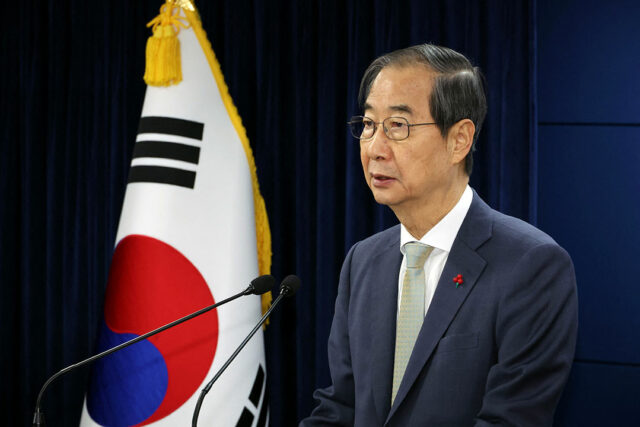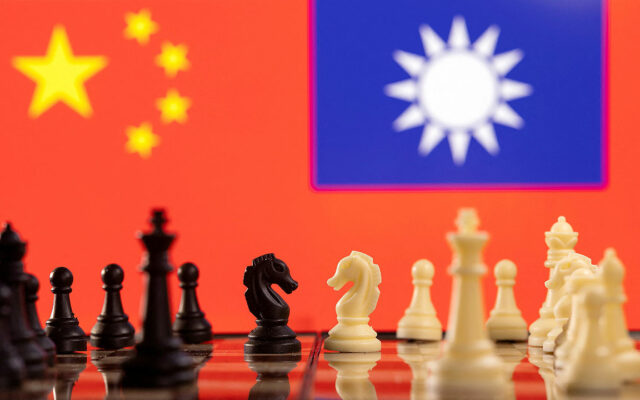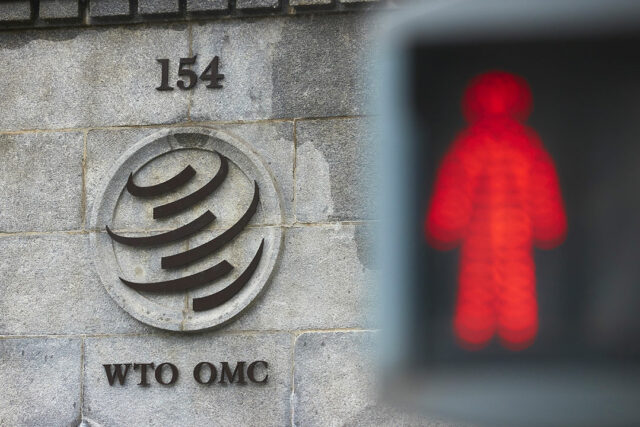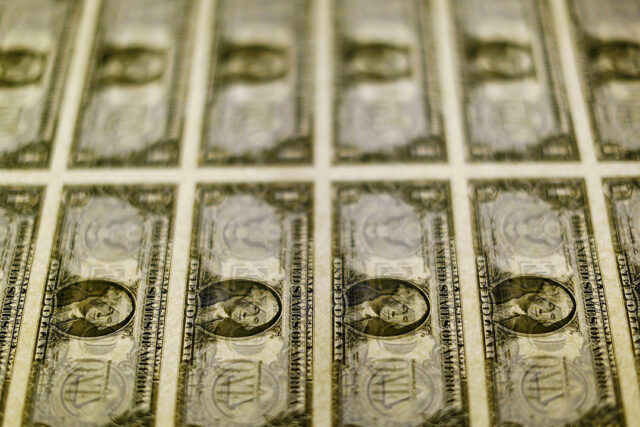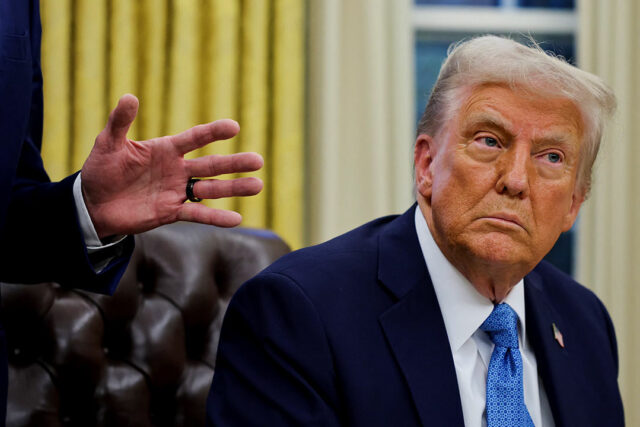WASHINGTON — In just 10 weeks in office, Donald Trump has imposed his will on perceived adversaries in business, politics, the media and allied nations by leveraging power in ways no other modern US president has tried.
His administration has sought the arrest and deportation of student protesters, withheld federal funds from colleges, ostracized law firms tied to his political opponents, threatened judges and tried to pressure journalists. At the same time Mr. Trump has downsized the federal government dramatically and purged it of workers who could stand in his way.
Central to this effort has been Mr. Trump’s use of policy-making executive orders to target opponents as never before. He has been unafraid to employ lawsuits, public threats and the power of the federal purse to bring institutions to heel.
“What unites all these efforts is Trump’s desire to shut down every potential source of resistance to the MAGA agenda and to his personal power,” said Peter Shane, a law professor at New York University.
Some targets have rushed to placate the president, a few have fought back and many are still trying to figure out how to respond. Many of Mr. Trump’s actions are being challenged in courts, where some judges have tried to slow him down.
The stunning speed and breadth of the Republican president’s actions have caught Democrats, public-service unions, CEOs and the legal profession off guard.
Mr. Trump’s supporters say he is simply using the full reach of his presidency to achieve the goals he set as a candidate.
“He’s laid out these broad battle lines, whether it’s with people that he thinks have tried to ruin him personally, whether it’s with people he thinks have tried to ruin Western civilization,” said Republican strategist Scott Jennings, a longtime adviser to Senator Mitch McConnell. “Everything he said he was going to do on the campaign, he’s doing.”
Mr. Trump’s aims are not just political. His actions show he wants to reorder American society with an all-powerful executive at the top, where financial, political and cultural institutions carry his stamp and where opposition is either co-opted or curtailed. With a compliant Congress controlled by his party and a US Supreme Court dominated by conservatives, Mr. Trump is operating with fewer checks on his power than any of his modern-day predecessors.
Mr. Trump has attempted to subdue and cajole his adversaries on an almost-daily basis, backed by the fearsome might of the law enforcement and regulatory agencies at his command. He has often succeeded.
He managed to wring concessions out of several of his targets, including storied Columbia University, powerful law firms and corporate titans such as Meta and Disney. All of them settled with the White House rather than endure the pressure, surrendering some independence and setting what some view as damaging precedents.
Others are taking preemptive measures to avoid Mr. Trump’s wrath.
More than 20 of America’s largest companies and financial firms, including Goldman Sachs, Google and PepsiCo, have rolled back diversity programs that had drawn Mr. Trump’s ire.
Three law firms cut deals with the administration rather than risk losing their lawyers’ security clearances, access to government buildings and perhaps, as a result, clients, while three others targeted by Mr. Trump’s executive orders sued in response.
Mr. Trump’s orders have also been his vehicle to remake the government, deport alleged Venezuelan gang members with little due process and levy tariffs against US trading partners.
He has sued US media corporations and silenced the Voice of America, taken control of the Kennedy Center, a leading arts facility, and sought to put curbs on the Smithsonian Institution, whose mission is to chronicle history.
His administration has detained student protesters whose political views it says are a threat to the country.
Mr. Trump has pushed a mineral-rights deal on Ukraine’s leadership with the veiled threat of ending US support for Kyiv in the Russian war in Ukraine. He has threatened NATO ally Denmark to try to wrest control of Greenland, spoken of annexing Canada and threatened to take the Panama Canal back from its home country.
TAILORED STRIKES
Mark Zaid, a Washington lawyer who represents whistleblowers against the federal government and who himself had his security clearance stripped away by Mr. Trump, said the president’s conduct is like nothing he has seen in his 30-year career.
“Executive orders have never been designed to specifically target individuals nor non-government actors for purposes of retaliation or retribution,” Mr. Zaid said.
The White House and Mr. Trump’s allies deny the president is acting out of revenge.
A White House spokesman said more traditional approaches have failed to bring meaningful change.
“Unconventional is precisely what the American people voted for when they elected President Trump,” White House spokesman Harrison Fields said. “The president is committed to upending the entrenched bureaucracy.”
In his first term from 2017-2021, Mr. Trump was hamstrung by a variety of factors: a federal probe into Russian interference, his aides’ lack of experience and greater Democratic opposition in Congress.
With those roadblocks gone, an emboldened Mr. Trump has demonstrated at the start of his second term that he has learned how to use the resources available to him more fully to get what he wants.
“He really does know how to pull the levers of power this time, more so than last time,” said Rina Shah, a Republican strategist.
Claire Wofford, a political science professor at the College of Charleston, said Mr. Trump has used executive orders not only to push forward a policy agenda, but also to send messages to his political base, as in his attempt to scale back birthright citizenship, and to test the limits of his power, as with his invocation of an 18th century law to designate some migrants as “alien enemies.”
“What strikes me most at this point is how strategic Trump is — but in new ways,” Ms. Wofford said.
FUNDING AND LITIGATION
In cases such as with Columbia University, Mr. Trump has used the federal purse as a cudgel, concluding his targets have financial interests that make them vulnerable to coercion.
In other cases, he has used the courts, forcing companies such as Disney and Meta into favorable settlements after Mr. Trump filed lawsuits against them.
CBS News, another Trump lawsuit target, is under pressure to settle its suit because its parent, Paramount, is eager to have its proposed merger with Skydance Media approved by Trump administration regulators.
But not every institution has bent the knee.
Many of Mr. Trump’s actions, particularly those regarding his cuts in government, remain tied up in federal court. In the last two weeks alone, judges have ruled against Mr. Trump in matters challenging his deportation policies, attacks against law firms and plans to eliminate government agencies.
In response, Mr. Trump and his allies have called for judges who rule against the administration to be impeached and drawn a rare rebuke from Chief Justice John Roberts.
Walter Olson, a senior fellow at the libertarian CATO Institute, said Mr. Trump’s attacks on law firms and judges are without precedent and are reminiscent of other nations with authoritarian regimes.
“Clipping the wings of law firms and the courts,” Mr. Olson said, “is the behavior of an autocrat.” — Reuters
